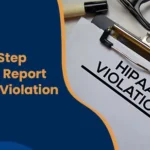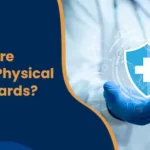The Seven Elements of A Compliance Program

August 12, 2025
How do healthcare organizations build a strong culture of compliance and avoid costly HIPAA violations? The best thing is to implement certain policies and procedures that your employees must follow with time. That is why the Health Insurance Portability and Accountability Act (HIPAA) regulations require organizations to establish clear guidelines and training programs. This involves following the policies related to the 7 elements of an effective compliance program. These compliance programs for businesses aim to meet regulatory standards and avoid costly violations.
The following guide will discuss these elements in detail to showcase how they are relevant to HIPAA.
Understanding HIPAA Compliance Support
HIPAA was established in 1996 to protect sensitive patient information. The US Department of Health and Human Services also issued the HIPAA Privacy Rule to implement all HIPAA requirements. The act mandates compliance for all healthcare organizations.
Failure to adhere to any HIPAA regulations can result in fines and legal action. Most healthcare organizations work with compliance consultants to remain HIPAA compliant.
The process involves implementing a HIPAA compliance program to protect the organization from violations and ensure all employees stay current on ever-changing regulations.
The 7 Essential Elements of an Effective HIPAA Compliance Program
Healthcare organizations need to introduce HIPAA compliance regulations as soon as an employee joins them. They must ensure the regulations are aligned with the 7 elements of an effective compliance program. This involves knowing the guidelines associated with all the elements as discussed below:
-
Implement Written Procedures, Policies, and Standards of Conduct
This element involves developing and implementing written rules and other standards of conduct. It outlines the expected behavior and ethical standards for different employees. Such guidelines enable organizations to ensure that employees understand their responsibilities. They also get to know the consequences of non-compliance through clear policies and procedures.
-
Designate a Compliance Office and Committee
Organizations must employ a compliance officer and establish a compliance committee. This enables them to manage and oversee all rules and regulations. The compliance officer must implement and maintain the compliance program while the compliance committee provides guidance and support.
-
Conduct Training and Education
Employees at all levels should receive ongoing training on compliance policies and procedures. This will make them aware of all relevant laws and regulations. This training will help everyone in an organization understand their role in maintaining compliance and provide them with the necessary knowledge to identify and address compliance issues.
The training programs must cover data privacy, ethical practices, and consequences of non-compliance.
-
Develop Effective Communication Lines
Organizations must establish different channels for their employees. These channels enable the staff to ask questions, report violations, and provide feedback on compliance programs.
The best way to encourage communication is to implement an anonymous reporting system. This enables employees to report their concerns without fear of retaliation. Organizations must protect the anonymity of complainants and whistleblowers. This promotes trust and encourages reporting, too.
-
Conduct Internal Monitoring and Auditing
Regular assessments enable organizations to identify compliance gaps and areas for improvement. Thus, they must conduct internal audits and risk assessments to analyze their compliance efforts. This also enables several organizations to identify non-compliance issues.
It is necessary to employ professionals or teams independent of the organizations to conduct audits. The authorities must also document and share the results of the audits with compliance officers and stakeholders. This enables them to develop action plans and introduce changes to enhance compliance programs.
-
Enforce Necessary Standards
Organizations must establish disciplinary guidelines to outline the consequences of non-compliance. They must communicate these public guidelines to all employees during onboarding. The same guidelines can be reinforced through training and awareness campaigns.
-
Respond to Offenses and Undertake Corrective Action
Organizations should respond immediately when a compliance offense is detected. This also involves taking appropriate corrective actions. Such initiatives help prevent further violations and showcase the organization’s commitment to maintaining compliance.
Read More: What are Covered Entities Under HIPAA?
Benefits of the 7 Elements of an Effective Compliance Program
Compliance management is necessary regardless of the organization type. Businesses may risk getting shut down or fined if they fail to comply with regulatory standards. The 7 elements of the compliance program ensure that organizations prevent and detect legal violations. Additional benefits include:
-
Organizes Compliance Requirements in One Place
A compliance program integrates business requirements into a unified regulatory framework. So, its associated elements streamline compliance tracking and task management. This enables organizations to ensure adherence to requirements. The elements also offer a centralized solution for collaboration between departments. This prevents the formation of silos around compliance tasks across organizations.
-
Facilitates Collaboration
The 7 elements of a compliance program make task assignment and reassignment easier. Employees can update their status, share documents, and provide comments in one place. This eliminates scattered information and prevents confusion and mismanagement. The result is a process that saves time and ensures employees have the necessary information.
-
Improves Visibility into Compliance Performance
Legal compliance management through the 7 elements allows organizations to monitor compliance levels and performance. This is usually done using custom drill-down reports and real-time dashboards. These features provide excellent visibility into the performance of compliance efforts.
-
Automates the Compliance Process
Ensuring compliance involves time-consuming and repetitive tasks prone to human error. An effective compliance program automates these tasks through different elements. Its functionalities include task scheduling and compliance monitoring. This, in turn, helps organizations become more agile and accurate.
-
Tracks Regulatory Changes Easily
Keeping up with the regulations of any organization is difficult due to frequent updates. It means employees must read the changes regularly and remain updated with the rules. The guidelines of the 7 elements solve this issue by tracking internal and external regulatory changes. They also enable organizations to eliminate non-compliant procedures. These guidelines help authorities to map new regulations and standards onto organizational operations.
-
Saves Money on Operational Costs
Implementing the seven elements enables organizations to streamline the compliance monitoring process. This eliminates the need for investing in more professionals and resources for compliance management. The compliance program further tracks regulatory changes and flags risks before they hurt the organization financially. It also reduces the chances of human error that may lead to fines and penalties down the road.
-
Creates a Business Roadmap
An effective compliance management program can guide organizations in the right direction. Mapping employees’ regulatory requirements highlight areas for improvement, allowing organizations to plan different compliance activities effectively.
-
Provides a Better Customer Experience
Implementing a compliance program with the 7 elements ensures adherence to regulations. It also showcases the organization’s dedication to enhancing its systems and processes, which benefits clients, customers, and stakeholders. The program also instills trust in the organization and promotes customer loyalty, increasing business.
Read More: Does HIPAA Prohibit Questions About Vaccination?
Tips to Become HIPAA Compliant
Organizations must take certain actions to outline a compliance action plan. This helps remove all kinds of confusion associated with HIPAA compliance. Here is a checklist that healthcare organizations can compare with their current programs to address all HIPAA compliance gaps:
-
Appoint HIPAA Privacy and Security Officers
HIPAA-covered organizations must appoint a security officer or a privacy compliance officer. Small organizations can assign both roles to the same individual, while larger operations can appoint separate professionals for each role to manage workloads more easily.
-
Conduct Annual HIPAA Training
All staff in a healthcare organization must undergo yearly HIPAA training. This training is obligatory for all employees. This also includes those who do not deal with protected health information (PHI) directly. A few important topics to cover include:
- Steps to Identify PHI,
- Minimum Necessary Rule,
- Patient Rights,
- Penalties for PHI Disclosure.
-
Document HIPAA Compliance Efforts
Organizations must document every detail of their HIPAA compliance programs. Documenting things could improve necessary actions in the event of an audit or data breach. This helps ensure ongoing compliance with HIPAA’s security standards, and organizations can avoid paying fines for HIPAA violations.
-
Introduce BAAs for Every Vendor
According to HIPAA, covered entities can outsource operations involving protected health information. Third parties must sign an agreement to ensure the complete protection of PHI at all times.
Under HIPAA, these third-party services are called “Business Associates.” The contract that binds these services to PHI protection is called a Business Associate Agreement (BAA). Organizations must ensure that they sign these BAAs with every vendor they work with to protect PHI.
-
Implement Security Safeguards
Organizations must implement three categories of safeguards to ensure compliance with security rules. These include:
- Administrative safeguards
- Physical safeguards
- Technical safeguards
These risk assessment safeguards ensure the identification of third-party security vulnerabilities. They enable organizations to implement stricter policies over time to ensure HIPAA compliance.
-
Perform an Annual Security Risk Analysis (SRA)
An SRA is an annual self-audit that assesses the resilience of the three security safeguards – administrative, physical, and technical. Organizations must conduct this honest analysis of all HIPAA security measures and the areas of their HIPAA compliance program. This enables them to identify risks and vulnerabilities that should be prioritized in remediation efforts. A risk matrix could assist healthcare organizations in this effort.
Implementing Compliance Programs to Prevent Healthcare Fraud
The 7 elements of an effective compliance program apply to all industries, including healthcare. Following these elements enables organizations to prevent the growing level of healthcare fraud and abuse. They can ensure PHI across all levels and instill trust among patients by following the associated guidelines. However, it is necessary to make sure the compliance programs are updated regularly. This also involves reviewing the programs to adapt to changing regulations, industry standards, and emerging risks. Therefore, organizations should adhere to the 7 elements of the compliance program to ensure HIPAA compliance.





